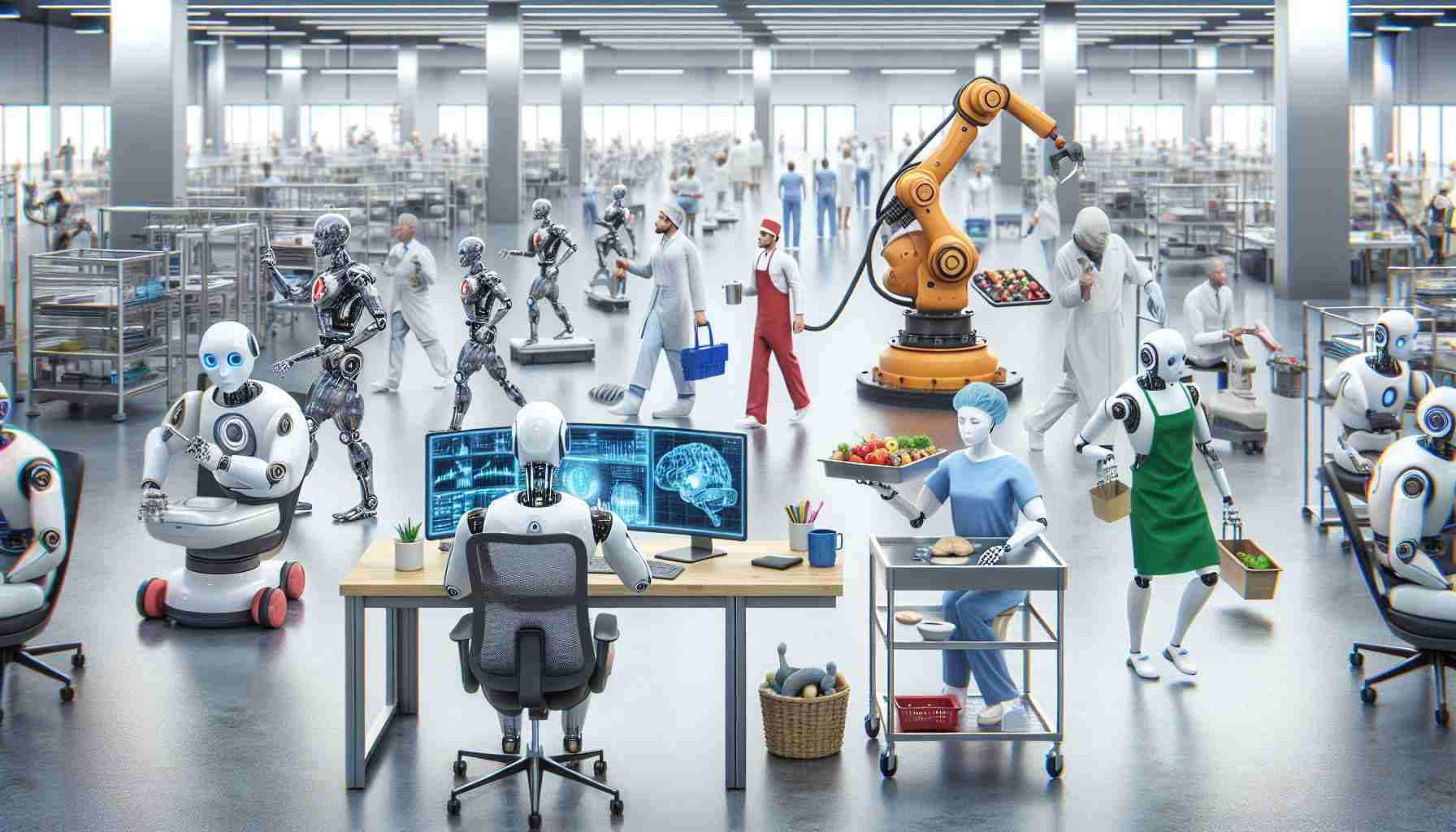The Rise of Humanoid Technology
Figure AI has made significant strides with the introduction of Figure 02, a state-of-the-art humanoid robot designed for industrial applications. Standing at 5’6″ and weighing 70 kg, this robot boasts a remarkable operational capability: it can function for up to five hours and carry a payload of 20 kg. Its primary purpose is to assist humans in the workforce, especially in labor-intensive and potentially hazardous environments.
Solving the Labor Crisis
The advent of Figure 02 aims not just to enhance efficiency but also to counteract the growing global labor shortages. By automating repetitive and strenuous tasks, these robots promise a safer work environment. Initially, their deployment is targeted for commercial use, making waves in both factories and eventually households.
Impressive Developments Ahead
After mere months of development, Figure AI has seen its robots enhancing their task efficiency by up to 400%. The emphasis, however, lies not solely in speed but in an extraordinary improvement trajectory—thanks to advanced AI frameworks that empower these machines to learn and adapt to new tasks swiftly.
The Future of Automation
The competition in the humanoid robot sector is heating up, with Figure AI positioning itself as a formidable contender alongside giants like Tesla. With ambitions to ramp up production and mastery of automation tasks, the industry is poised for rapid transformation. As developments continue to unfold, the year 2025 promises groundbreaking changes in how we perceive and interact with humanoid technology.
Tips and Tricks for Embracing Humanoid Technology in Daily Life
As humanoid technology continues to evolve, particularly with innovations like the Figure 02 robot, it’s important for individuals and businesses to explore how to best integrate these advancements into their daily lives. Here are some tips, life hacks, and intriguing facts that can help you make the most of this technology revolution.
1. Understanding the Benefits
Before adopting humanoid technology, it’s crucial to grasp its potential benefits. Robots like Figure 02 can significantly reduce human workload by handling physically demanding tasks. For instance, if your job involves heavy lifting or repetitive actions, working alongside a humanoid robot could enhance productivity and minimize the risk of injury.
2. Start Small
If you are looking to integrate humanoid robots into your business or home, consider starting with one robot for specific tasks. This allows you to monitor performance, troubleshoot issues, and gradually scale up the use of robots without overwhelming your workforce or family.
3. Training and Adjustment
Make sure to provide adequate training for humans who will work alongside humanoid robots. Understanding how to interact with and manage these robots is essential to ensure a smooth operation. This might include learning how to program tasks, troubleshoot minor issues, and maintain the robots.
4. Explore Automation Potential
Evaluate your daily processes to identify areas that can benefit from automation. Craft simple workflows where humanoid robots can assist in tasks such as inventory management, material handling, or even household chores. Companies can maximize efficiency by analyzing how robots can rearrange processes for improved workflow.
5. Stay Updated on Technology Trends
The humanoid technology sector is rapidly evolving. Staying informed about the latest developments and innovations can help you make timely decisions about implementing new technologies. Follow reports on new robots, updates to AI frameworks, and productivity innovations through reliable tech news channels.
Interesting Facts About Humanoid Robots
– Many humanoid robots are now equipped with advanced AI that allows them to learn from their environments, which enhances their adaptability and efficiency over time.
– The market for humanoid robots is expected to grow significantly, with investments focusing on both commercial and domestic applications.
– Humanoid robots are not just limited to physical tasks; they are also being developed to assist in customer service roles, providing information interactively.
6. Safety Measures are a Must
As with any new technology, safety should always be the priority. Ensure that protocols are in place to monitor the operational environment where humanoid robots function. Regular maintenance checks and updates can prevent accidents and ensure the robots operate correctly.
7. Embrace Collaboration
Integrating humanoid robots into your workplace doesn’t mean replacing human workers. Instead, view them as collaborators who can enhance human capabilities. This shift in perspective can foster a positive environment where humans and robots work together to achieve more.
By embracing humanoid technology with careful consideration and innovative strategies, we can maximize its benefits while working alongside these remarkable machines. For those interested in learning more about the future of automation and humanoid robots, visit Figure AI for the latest insights and updates.



















